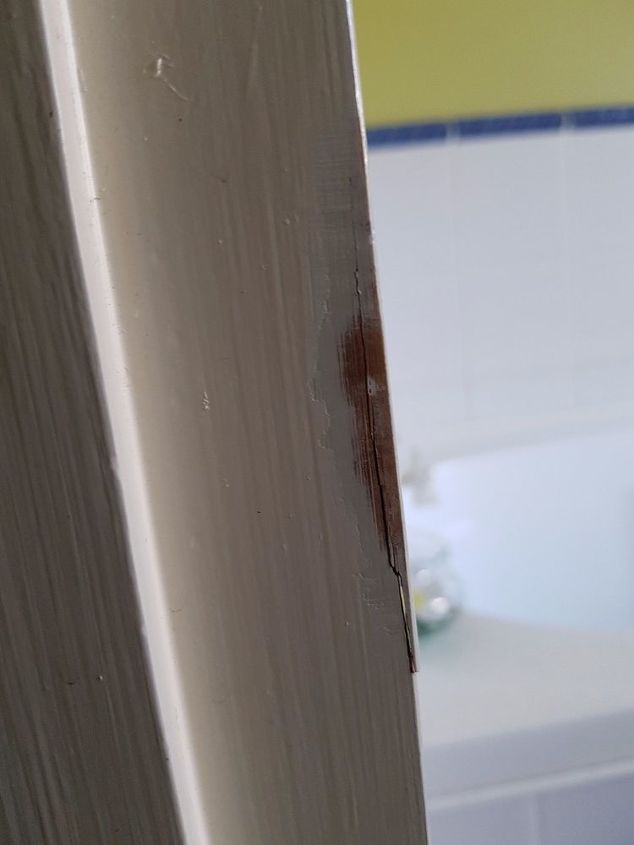How do we stop basement walls from sweating/molding?
We have a walk out basement. The walls that are exposed outside are painted concrete. Inside is also painted but even with a dehumidifier, they sweat and mildew, especially inside the cabinets. What can be done OUTSIDE to stop this from happening?
Related Discussions
How to get rid of mice?
We seem to have some unwelcome Mickeys and Minnies in our house. What is the best way to get rid of them?
How to remove popcorn ceiling with asbestos?
I want to remove my popcorn ceiling, but it has asbestos in it. How do I go about this safely?
How to trap fruit flies?
Does anyone know how to get rid of fruit flies with a homemade trap?
How to remove popcorn ceiling with vacuum?
Is there a way to use a vacuum to remove a popcorn ceiling?
How to fix a crack in a door frame?
How to fix a door frame with a split in it?
Stairs to basement railing pulled out of the wall. How do we fix it?
The anchors into the wall for the top bracket of the stairway railing have pulled out. How di we secure it again so the railing is safe to use again. I need the use t... See more
How do we stop bees from coming into our laundry room?
We can't find where they are getting in.




Redirect the water from the foundation. Gutters. Slope the ground away from the foundation. Paint the walls with a waterproof mastic and caulk every little crack.
Rhonda,
This could be happening for several reason, but we need more info to know which direction to point you in. You did not mention if this is a finished space with walls, flooring, and a ceiling or if it is conditioned (heated or cooled by your HVAC system) and if this is happening anywhere else in your basement. What is the condition of the paint and do you see any efflorescence? The paint may actually be part of the problem. How long has it been on the walls?
Yes, make sure all the downspouts extend at least 4’ from the house, that the dirt on all sides of the house slopes at least 4% in that 4’ zone.
Water will wick from 50’ feet away to find the lowest spot, which is your basement walls’ foundations.
Buy a good dehumidifier & get a drain hose for it and run it 24/7. Mold will contaminate the entire house and is dangerous.
Lower your dehumidifier's reading to 35%, letting it run, continuously. If the problem continues (until you've redirected outside water at least 10' from your foundation), lower the dehumidifier to 30%.
Keep the dehumidifier closer to the affected walls, adding a hose extension to your dehumidifier hose, if needed, and letting the water drain into your floor drain.
I'd further avoid drying clothes on a line, or leaving water in your laundry tub.
If your soil is heavy clay, you'll need to dig up the ground near the affected walls and add gypsum (west of the Mississippi) or glauconated greensand (eastern half of U.S.), in addition to perlite and sphagnum peat.
If you're lower than your neighbors, you'll need a swale, French drain, or Hydro Blox system. If rains are excessive, you may need wider downspouts.
Your gutters should be clear of obstructions, year round. Install Gutter Guard on gutters, if you don't want to climb a ladder twice a year to check gutters.
In addition to all the great advice given above you could also use a couple of fans in your basement. My mother did this and set them on low and never turning them off. No mold or mildew. In addition, you can kill the mold but what about the spores. Some time ago I read about the spores but do not recall how to do this. Please google for this information. Good luck.
Rhonda,
The problem may be your heater. Ventless heaters create a large amount of water vapor as the byproduct of the LP gas combustion. It will produce more in colder weather, especially if you are running it more. If the heater is oversized for the space, the issue will be worse. The tighter the room, the more water vapor is being retained. The temperature difference between the outer walkout wall and the interior of that wall will result in the sweating you are seeing. The warm, moist air is providing the perfect conditions for mold growth. Mold will grow on any organic substance like the wood in the cabinets or on your walls. You might want to contact an HVAC person regarding the heater. In the meantime follow the suggestion of others as to providing air flow and dehumidification. Below is a picture of the set up I use in my basement. I do not have a floor drain, so I have my dehumidifier drain into a Little Giant condensate pump and it pumps the water from the dehumidifier up along the ceiling to my washer drain through clear 3/8 inch PVC tubing.